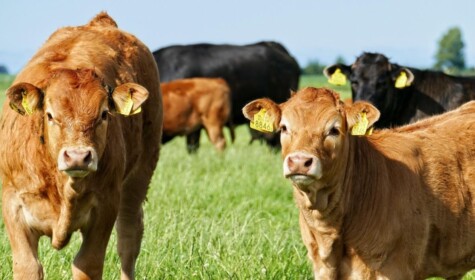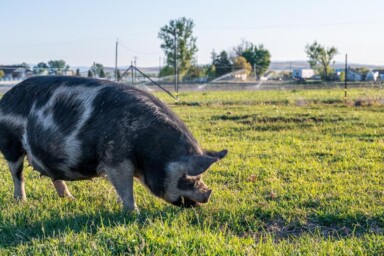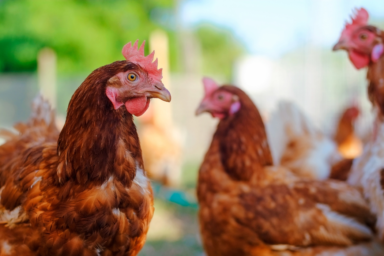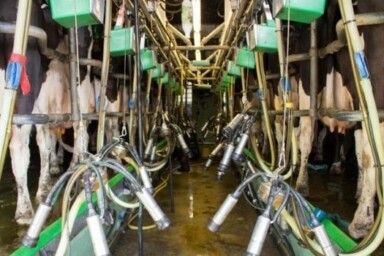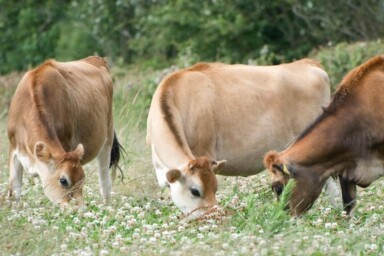Regenerative Agriculture: Farming with Benefits by Marianne Landzettel and Bill Gates’s How to Avoid a Climate Disaster offer opposing approaches to making farming sustainable. The backdrop is an array of alarming statistics on climate change and biodiversity loss. A recent report by the WWF and the Royal Zoological Society concluded that ‘agriculture is the primary force behind the transgression of the Planetary Boundaries for nitrogen, phosphorus, climate change, biosphere integrity, land system change and freshwater use’. That agriculture needs to change is widely accepted; how is still up for debate.
Farming with Benefits is a whistle-stop tour through America’s pioneers of regenerative agriculture, from activists in Hawaii fighting pesticide spraying on GM test sites to farmers in the Midwest reducing chemical fertiliser and herbicide use. Landzettel’s characters bring to life the realities of working with the land to end a dependence on chemicals and produce sustainable food in a system that is not geared to reward it. Their methods encompass diverse crop rotations and cover crops, reducing soil disturbance and integrating perennial plants such as permanent pasture and fruit and nut trees. Grazing livestock are often an essential part of the farming system due to their role in providing food from grasslands and building soil health and fertility in crop rotations.
Landzettel’s reportage style animates subject matter that can be heavy going for the non-practitioner. Her book doesn’t offer one-size-fits-all solutions or sugarcoat that the path to reducing synthetic and imported inputs is hard. But it does offer stories that will encourage and stimulate farmers who want to try regenerative approaches.
How to Avoid a Climate Disaster is polar opposite in its style and the solutions it offers. If Landzettel’s book is field-based and multifaceted in the problems it seeks to address, Gates’s chapter on farming is entirely focused on climate change and its solutions come mainly from the laboratory. This is not a criticism: Gates is a self-confessed technophile and his book does not seek to address the many interconnected problems besetting agriculture. The clue is in the title. But it does perhaps explain why the books barely overlap in their analysis or conclusions.
Gates sets out the five areas where humans need to cut GHG emissions drastically. Agriculture has a uniquely hard task due to population dynamics. The planet will house 40% more people by the end of the century. As people get wealthier they consume more meat and dairy. This is a problem because, in Gates’s analysis, it takes six calories of feed for every calorie of beef produced. He advocates replacing beef and dairy with plant-based alternatives.
This would not take agriculture to net zero. In Gates’s view, we need technological breakthroughs to get to zero. His agricultural hero is Norman Borlaug, the Nobel-prize winning agronomist who pioneered the Green Revolution by creating a dwarf wheat variety that put most of its energy into growing the edible part of the plant. What agriculture needs now, Gates says, are ‘Borlaug-sized’ breakthroughs leading to continued yield advances with zero-carbon fertiliser. These are the one-size-fits-all solutions that appeal to policymakers.
They do, however, leave many questions unanswered. For example, the problem of water contamination caused by heavy use of chemical inputs. Nitrogen fertiliser use has increased around 800% since 1961 to achieve an increase in per capita food supply of over 30%. Meanwhile, fertilisers entering coastal ecosystems have produced more than 400 ocean ‘dead zones’ with a combined area greater than that of the United Kingdom. Even if fertiliser were carbon free, it would still be a contaminant. The same can be said for pesticides and herbicides. Nor does Gates address the way intensive farming is causing land degradation that is undoing some yield gains. Land degradation has reduced the productivity of 23% of the global land surface; up to $577 billion in annual global crops are at risk from pollinator loss.
Gates assumes cattle are grain fed. This is perhaps understandable given the predominance of industrial farming, especially in the US, but it ignores an important pastoral tradition whereby livestock digest coarse plant foods inedible to humans, creating protein and nutrients from land with little other extrinsic use. In the UK, pasture and semi-natural grasslands account for around 40% of land cover and include important and specialised habitats including moorland, herb-rich meadows, coastal marshes and wood pasture, many of which are protected under law due to their conservation value. Grazing animals are fundamental to the economic viability of these habitats and play a vital role in supporting biodiversity, nutrient cycling and storing carbon in vegetation and soils. The National Trust, which conserves around a quarter of a million hectares of countryside in England and Wales, concluded in a report: ‘Cattle and sheep are vital for the management of our grasslands.’
Grasslands are an important and critically threatened ecosystem. They store between 20% and 34% of global terrestrial carbon and are a unique habitat for a number of threatened species. They are experiencing among the fastest rates of loss and degradation. To an extent Gates is right about beef: conversion to cropland and planted pasture is the number one threat to grasslands, both of which are fuelled by meat demand. Paradoxically, well-managed livestock are also critical to their survival.
Gates does not address these nuances. It is hard to see how his solutions can be implemented while simultaneously restoring natural processes and healthy ecosystems to agricultural land and the surrounding habitats affected by it. In effect reinstating the exceeded boundaries identified by the WWF and Royal Zoological Society report.
There are also problems with the measurement of the warming power of methane that Gates does not acknowledge. The IPCC practice of calculating warming effects of GHGs as ‘carbon dioxide equivalent’ – despite their different lifespans – can be misleading, according to scientists at the University of Oxford. The team proposed an alternative approach of reporting emissions as ‘warming equivalents’ called GWP* which shows gradually declining methane emissions of 0.3% per year make no further contribution to warming. While this implies a need to reduce red meat intake as the population grows, the scale of the reductions might allow for a more productive discussion about the role of grazing livestock in sustainable food systems.
Conversely, Landzettel arguably does not grapple sufficiently with methane emissions: if livestock are at the heart of sustainable farming, what does that mean for greenhouse gas emissions? She provides case studies on carbon sequestration but with the impact being variable and site specific, it is hard to extrapolate individual studies into broad solutions.
Reading these two books reveals the chasm between the solutions offered by the regenerative agriculture and climate change movements. It is clear both challenges need to be solved and this presents a real conundrum. Better climate change metrics and carbon sequestration data may hold the key but a lot more research will be needed. It is vital that this research is guided by accuracy and not agendas. As Gates says, quoting Hans Rosling: ‘When we have a fact-based worldview, we can see that the world is not as bad as it seems – and what we have to do to keep making it better.’
